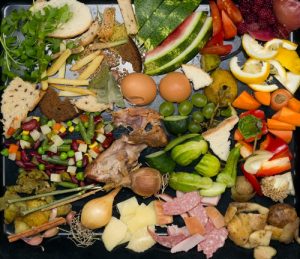Cost, Planning, and Accessibility Barriers
7. Cost, Planning, and Accessibility Barriers Should be Addressed When Implementing Inclusive Nutrition Standards of Care
7.1 Resources for food access
A. The Center on Nutrition and Disability County-Based Pantry Resource Bank (Email Greta Latvyte, [email protected])
B. Supplemental Nutrition Assistance Program: SNAP provides a monthly supplement for purchasing nutritious food. If you qualify, you’ll get a debit card to use for groceries.
- Applications are accessible online, printable version, and by calling your County Board of Social Services
- Applications online are available in English and Spanish
- Printable applications are available in Arabic, Bengali, Chinese/Sim, Dutch, Gujarati, Haitian/Creole, Hindi, Italian, Korean, Polish, Portuguese, Punjabi, Russian, Ukrainian, Urdu.
- NJ SNAP Program offers delivery services from the following stores: Walmart, Shoprite, and Amazon.
- NJ SNAP-Ed, a part of the Supplemental Nutrition Assistance Program (SNAP), is a nutrition and physical activity program aimed at teaching NJ residents how to make healthy, budget-friendly food choices and lead more active lives.
- Women, Infant and Children Program: It is the goal of the New Jersey WIC Services to utilize various strategies to reduce poor pregnancy outcomes, and facilitate the improvement of nutritional status by identifying and providing services to prevent nutrition problems and challenges that impact the nutritional and health status of low-income pregnant, postpartum, breastfeeding women, infants, and children participating in the New Jersey WIC program.
C. Summer Meals Program: Just as learning does not end when school lets out, neither does a child’s need for good nutrition. The Summer Food Service Program (SFSP) provides free, nutritious meals and snacks to help children in low-income areas get the nutrition they need to learn, play and grow throughout the summer months when they are out of school.
- Click here to view the list of Summer Food Service Meal Distribution Sites
- Also, make sure to check with your School District for programs
7.2 Budget and Planning
Plan meals, go shopping, and prepare foods together using fun utensils and gadgets!
- Suggestion: melon baller, blender for smoothies, cookie cutters for sandwiches.
- The Academy of Nutrition and Dietetics provides ideas on meal prepping and planning on a budget, as well as basic meal planning tips.
- Basics of Meal Prepping Video
- Choose a Day to prepare meals.
- Choose recipes for the week and go food. shopping for the week.
- Save money and avoid wasting food
- To keep foods fresh line the container with a paper towel
3. Eat Right When Money’s Tight
4. NJABLE Account (Savings account for people with disabilities):
a. Planning/Budgeting Templates:
- CND WEEKLY NUTRITIOUS FOOD BUDGET TEMPLATE
- CND WEEKLY FOOD BUDGET GOOGLE SHEETS
- CND WEEKLY MEAL PLAN TEMPLATE
7.3 Repurposing foods:
- Be mindful of old ingredients and leftovers you need to use up. You’ll waste less and may even find a new favorite dish.
- Shop in your refrigerator first! Cook or eat what you already have at home before buying more.
- Have produce that’s past its prime? It may still be fine for cooking. Think soups, casseroles, stir-fries, sauces, baked goods, pancakes, or smoothies.
- If safe and healthy, use the edible parts of food that you normally do not eat. For example, stale bread can be used to make croutons, beet tops can be sautéed for a delicious side dish, and vegetable scraps can be made into stock.
- Learn the difference between “sell-by,” “use-by,” “best-by,” and expiration dates.
- Are you likely to have leftovers from any of your meals? Plan an “eat the leftovers” night each week.
- Casseroles, stir-fries, frittatas, soups, and smoothies are great ways to use leftovers too. Search for websites that provide suggestions for using leftover ingredients.

Examples provided by Move For Hunger:- Some last bits of jam left with not quite enough to use it for anything? Add equal parts of oil and vinegar to make a great salad dressing!
- Potatoes are delicious, but potato peels can be, too! Throw them in the over with oil and seasonings like salt and pepper for a great snack!
- Instead of making a traditional basil and parmesan pesto, make a waste-free pesto by blending green carrot tops and radishes with nuts and garlic.


